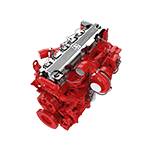Nov . 05, 2024 12:20 Back to list
do brake drums have pads
Do Brake Drums Have Pads? Understanding the Mechanics of Brake Systems
When it comes to vehicle safety and performance, the braking system is one of the most critical components. Understanding the differences between the various types of braking systems can help drivers maintain their vehicles and enhance safety. One common question that arises is whether brake drums have pads, and this article will clarify that, delve into the operation of brake drums, and differentiate them from disc brake systems.
Understanding Brake Drums
To begin with, brake drums are part of a drum brake system, which has been widely used in vehicles for many years. Drum brakes consist of several components, including the brake drum, brake shoes, and the wheel cylinder. The brake drum is a round, cylindrical component that rotates with the wheel. The brake shoes, on the other hand, are curved pieces of metal with friction material attached to the outer surface, similar to brake pads in disc brake systems.
Do Brake Drums Have Pads?
Now, to answer the question directly brake drums do not have pads. Instead, they use brake shoes that expand against the inside of the drum to create the necessary friction to slow down or stop the vehicle. The shoes are pushed outward against the drum's internal surface when the driver presses the brake pedal, thanks to fluid pressure generated by the wheel cylinder.
While brake pads are typically flat and are used in disc brake systems, brake shoes in drum brake systems are curved. This design is essential for the braking action, as it maximizes the contact area with the drum and provides effective stopping power. The pads and shoes serve similar functions but are designed for different braking systems.
How Drum Brakes Work
do brake drums have pads

The operation of drum brakes is relatively straightforward. When you apply the brakes, hydraulic fluid from the master cylinder is sent to the wheel cylinder within the drum brake assembly. This pressure forces the pistons in the wheel cylinder to move outward, which, in turn, pushes the brake shoes against the inside of the brake drum. Friction generated by this contact slows down the rotation of the drum and, consequently, the wheel.
One of the key features of drum brakes is their ability to provide strong stopping power, especially at lower speeds. They are often found in older vehicles and are still used in the rear braking systems of many trucks and vans due to their effective design and lower manufacturing costs.
Advantages and Disadvantages of Drum Brakes
Drum brakes come with their advantages. They are generally less expensive to manufacture and install compared to disc brakes. Additionally, they provide better performance in some situations, such as when the braking system is continuously subjected to high temperatures. Drum brakes can resist fading better than disc brakes under certain conditions.
However, drum brakes also have disadvantages. They tend to be less effective than disc brakes at high speeds due to the risk of overheating and can be more challenging to service. The internal components, such as the brake shoes, springs, and wheel cylinder, are harder to access, making maintenance potentially more complicated.
Conclusion
In summary, brake drums do not have pads; instead, they utilize brake shoes to generate friction against the inner surface of the drum. Understanding the workings of drum brake systems is essential for vehicle owners and enthusiasts alike, as it assists in maintenance decisions and helps enhance the safety and performance of the vehicle. While drum brakes remain an important part of many vehicles, the ongoing evolution of automotive technology continues to see a growing preference for disc brakes, particularly in performance-oriented applications. Whether your vehicle employs drum brakes or disc brakes, ensuring that your braking system is well-maintained is vital for safe driving.
-
Scania Brake Drums: OEM Quality for Optimal Safety & Durability
NewsAug.16,2025
-
R.V.I: Advanced Remote Visual Inspection for Precision
NewsAug.15,2025
-
Discover HYUNDA: Innovative Vehicles, Equipment & Solutions
NewsAug.14,2025
-
R.V.I: Unlock Advanced Insights & Real-time Performance
NewsAug.13,2025
-
Kamaz Brake Drum: Durable & Reliable for Heavy Duty Trucks
NewsAug.12,2025
-
Heavy Duty Iveco Brake Drum - Premium Quality & Safety
NewsAug.11,2025
